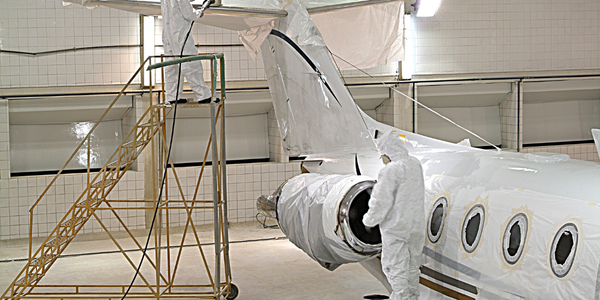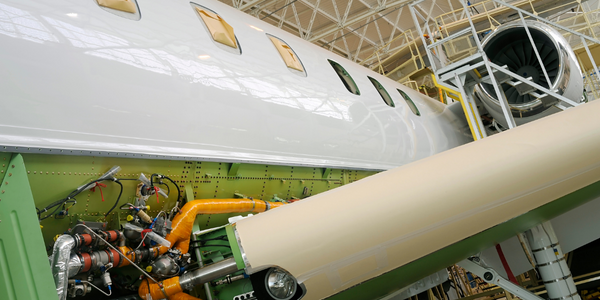Customer Company Size
Large Corporate
Region
- America
Country
- United States
Product
- Cloud Depiction and Forecast System II (CDFS II)
- Versant Object Database
Tech Stack
- Object-oriented programming
- C++
Implementation Scale
- Enterprise-wide Deployment
Impact Metrics
- Productivity Improvements
- Digital Expertise
Technology Category
- Platform as a Service (PaaS) - Data Management Platforms
Applicable Industries
- National Security & Defense
- Aerospace
Applicable Functions
- Discrete Manufacturing
- Quality Assurance
Use Cases
- Predictive Maintenance
- Real-Time Location System (RTLS)
Services
- Software Design & Engineering Services
- System Integration
About The Customer
Northrop Grumman Corporation is a leading global security company with 120,000 employees. The company provides innovative systems, products, and solutions in aerospace, electronics, information systems, shipbuilding, and technical services to government and commercial customers worldwide. One of their projects was the development of the Cloud Depiction and Forecast System II (CDFS II) for the U.S. Air Force. This system provides near real-time global cloud analysis and forecasting, which is crucial for military operations. The system is operated by the Air Force Weather Agency (AFWA) and uses advanced algorithms and operational infrastructure to collect and analyze sensor data from three classes of military and civilian meteorological satellites.
The Challenge
Northrop Grumman was tasked with developing a next-generation simulation application, the Cloud Depiction and Forecast System II (CDFS II), for the U.S. Air Force. The application needed to deliver results six times faster and with four times higher resolution than the previous system. The challenge was to program complex algorithms using object-oriented programming techniques. The previous system could only create a 48-hour forecast every six hours and a nine-hour forecast on request. The new system needed to improve on these capabilities.
The Solution
Northrop Grumman implemented the Versant Object Database for the CDFS II. This eliminated the overabundance of index structures and the mapping layer, resulting in much higher data ingestion rates. The Versant Object Database allowed CDFS II to perform data ingestion and analysis an order of magnitude faster compared to the old CDFS system. The in-memory object model represents the Versant database model one to one without any intermediate data definition language or runtime translation layer. As a result, CDFS II needed significantly fewer queries and correspondingly the number of database indexes required were substantially reduced.
Operational Impact
Quantitative Benefit

Case Study missing?
Start adding your own!
Register with your work email and create a new case study profile for your business.
Related Case Studies.

Case Study
Airbus Soars with Wearable Technology
Building an Airbus aircraft involves complex manufacturing processes consisting of thousands of moving parts. Speed and accuracy are critical to business and competitive advantage. Improvements in both would have high impact on Airbus’ bottom line. Airbus wanted to help operators reduce the complexity of assembling cabin seats and decrease the time required to complete this task.

Case Study
Aircraft Predictive Maintenance and Workflow Optimization
First, aircraft manufacturer have trouble monitoring the health of aircraft systems with health prognostics and deliver predictive maintenance insights. Second, aircraft manufacturer wants a solution that can provide an in-context advisory and align job assignments to match technician experience and expertise.

Case Study
Aerospace & Defense Case Study Airbus
For the development of its new wide-body aircraft, Airbus needed to ensure quality and consistency across all internal and external stakeholders. Airbus had many challenges including a very aggressive development schedule and the need to ramp up production quickly to satisfy their delivery commitments. The lack of communication extended design time and introduced errors that drove up costs.

Case Study
Accelerate Production for Spirit AeroSystems
The manufacture and assembly of massive fuselage assemblies and other large structures generates a river of data. In fact, the bill of materials for a single fuselage alone can be millions of rows of data. In-house production processes and testing, as well as other manufacturers and customers created data flows that overwhelmed previous processes and information systems. Spirit’s customer base had grown substantially since their 2005 divestiture from Boeing, resulting in a $41 billion backlog of orders to fill. To address this backlog, meet increased customer demands and minimize additional capital investment, the company needed a way to improve throughput in the existing operational footprint. Spirit had a requirement from customers to increase fuselage production by 30%. To accomplish this goal, Spirit needed real-time information on its value chain and workflow. However, the two terabytes of data being pulled from their SAP ECC was unmanageable and overloaded their business warehouse. It had become time-consuming and difficult to pull aggregate data, disaggregate it for the needed information and then reassemble to create a report. During the 6-8 hours it took to build a report, another work shift (they run three per day) would have already taken place, thus the report content was out-of-date before it was ever delivered. As a result, supervisors often had to rely on manual efforts to provide charts, reports and analysis.

Case Study
Developing Smart Tools for the Airbus Factory
Manufacturing and assembly of aircraft, which involves tens of thousands of steps that must be followed by the operators, and a single mistake in the process could cost hundreds of thousands of dollars to fix, makes the room for error very small.








